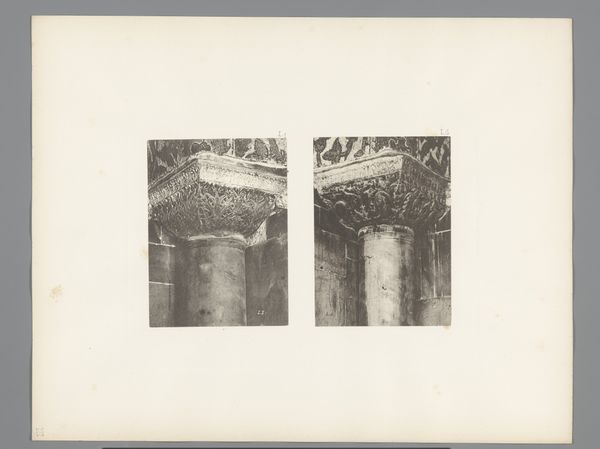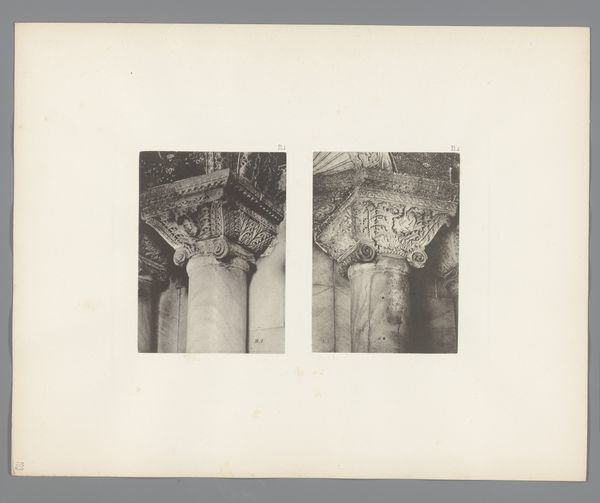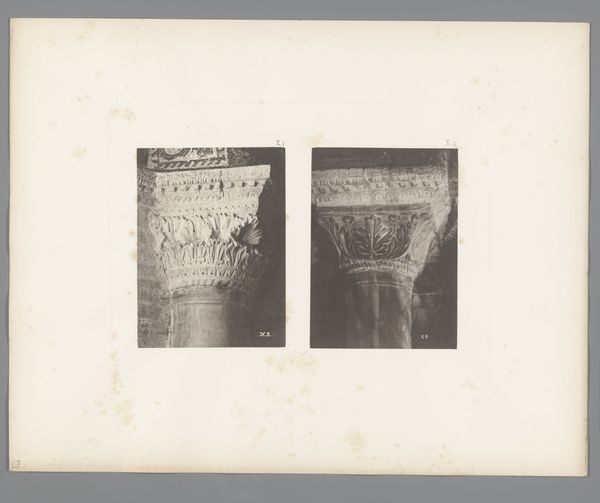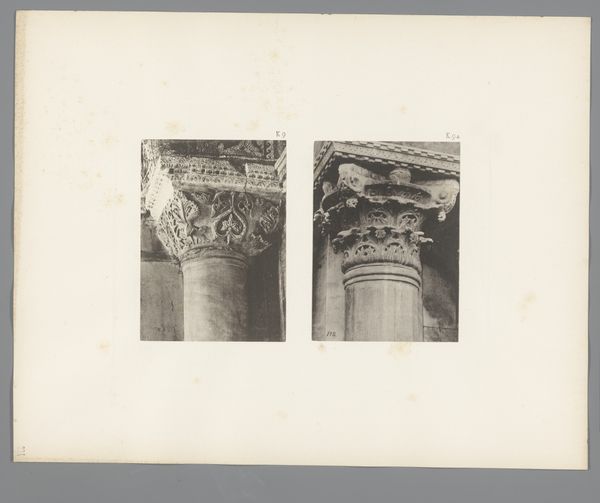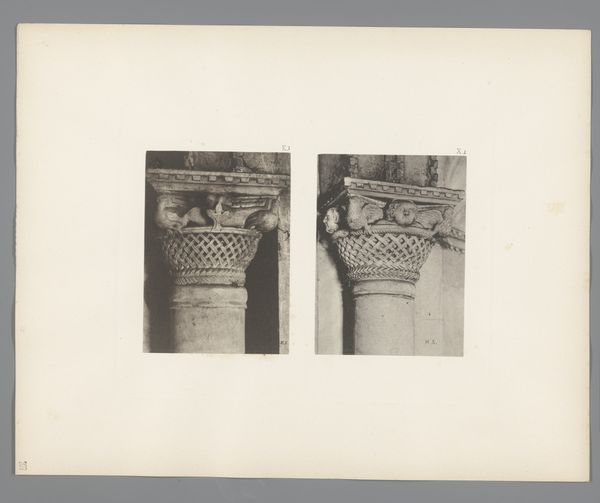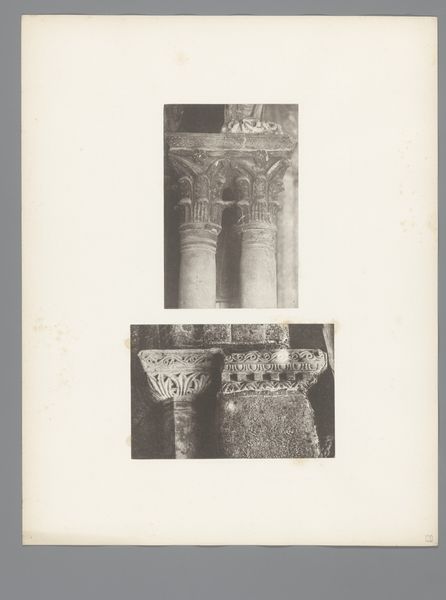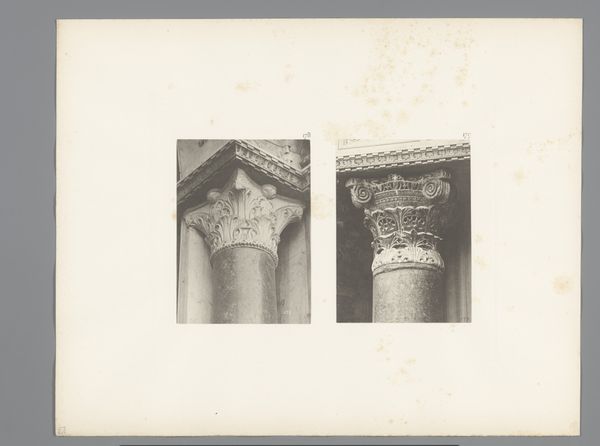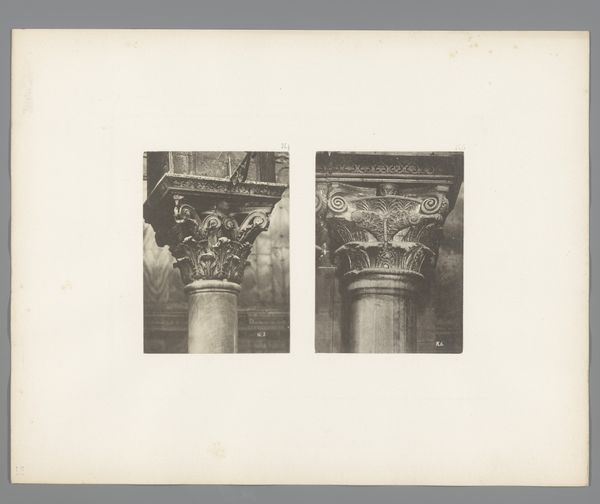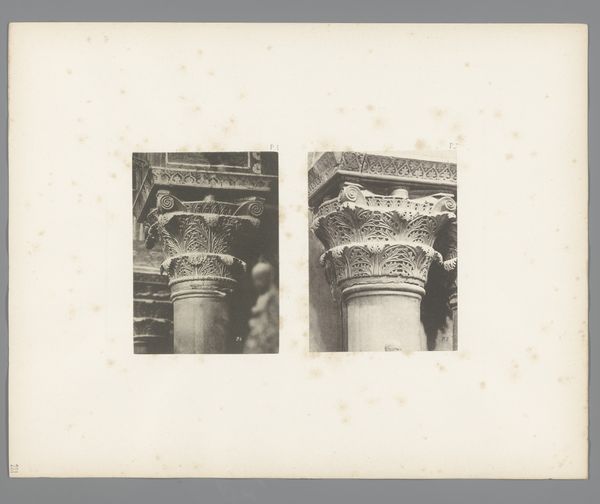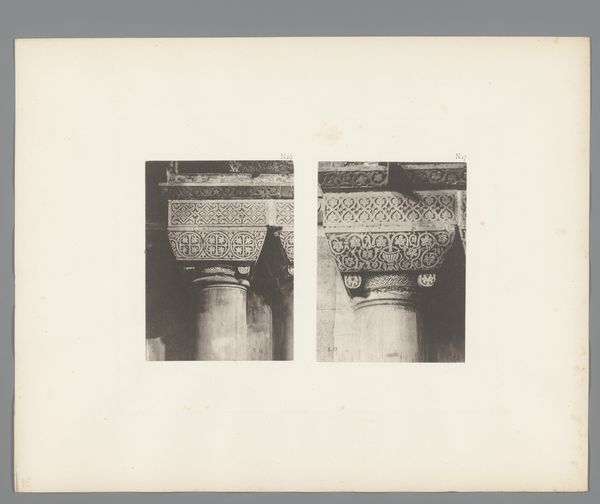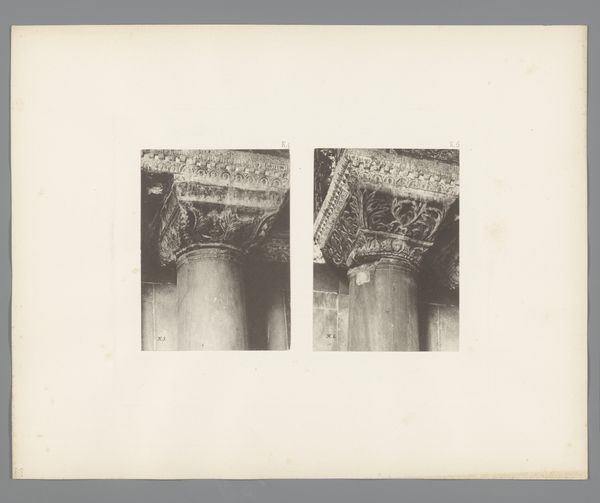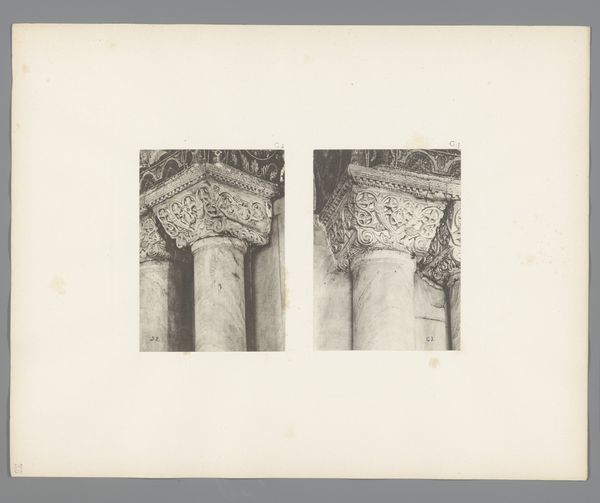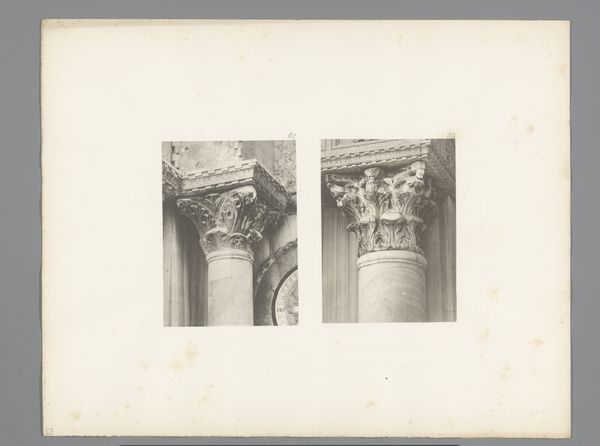
print, photography, architecture
# print
#
greek-and-roman-art
#
landscape
#
photography
#
geometric
#
architecture
Dimensions: height 310 mm, width 394 mm
Copyright: Rijks Museum: Open Domain
Curator: Two studies in stone, capturing details from the Basilica di San Marco in Venice. These photographic prints by Carl Heinrich Jacobi, dating from before 1885, present us with close-ups of ornate capitals. They’re paired, almost like siblings, on the same sheet. Editor: My first thought? Intricate. Really shows off how much painstaking labour went into constructing such spaces. It’s fascinating how Jacobi frames these architectural details almost as portraits. Curator: Absolutely, Jacobi isn't merely documenting; he’s inviting us to consider the craftsmanship, but also the ideas swirling through Venice at this moment. San Marco is interesting because it brings the legacy of classical architecture to our modern imagination. It also acts a container of national power. Editor: Tell me more, especially about those columns, what purpose do they fulfill beyond being objects of desire? Curator: In terms of political symbolism, during the period when Venice was at its peak, and sought to brand itself, those columns acted as trophies brought back from military campaign in the Byzantine East. Jacobi presents them stripped bare, we look for any sign of looting or cultural extraction, it is all flattened out to make them simply about "Art". Jacobi here presents a silent but clear message on colonialism and how history is written in photography. Editor: You are making me rethink them! There’s a kind of somber beauty, a monumentality even in these small-scale prints. It's striking how different each capital is – the carvings, the patterns, and even the wear and tear. What do you make of that contrast? Curator: That is what makes these capitals special and perhaps where Jacobi succeeds in producing meaning. It really invites a longer look; to examine and think of the individuals behind these decorative gestures in architecture. What do these images conjure in your mind when considering the dialogue of classicism and empire? Editor: I am mostly wondering about their past and imagining myself as a traveler of the time. Now that I think about it, thanks to photography that democratized images and dissemination of information, one gets an opportunity to sit at the table and participate. Jacobi, as I see it, puts democracy back into architecture, how marvelous is that!
Comments
No comments
Be the first to comment and join the conversation on the ultimate creative platform.
